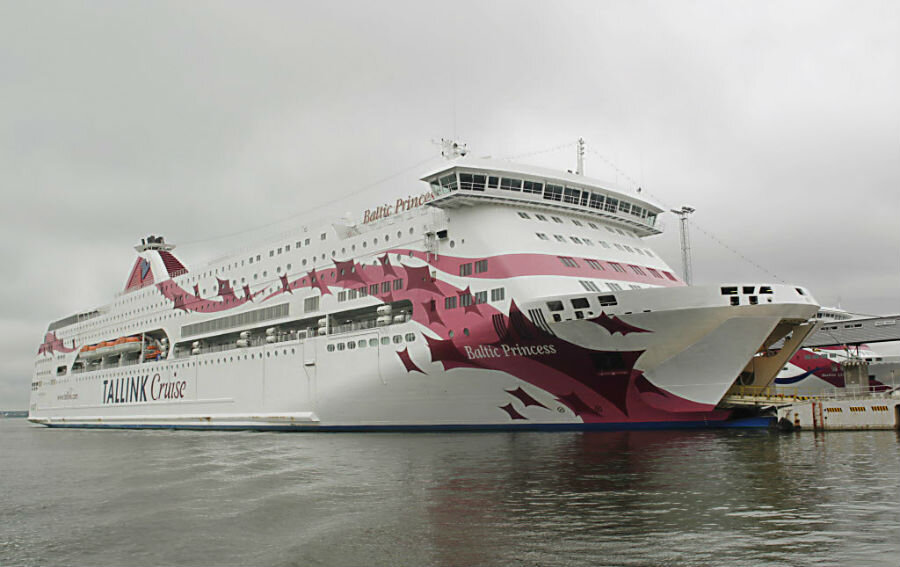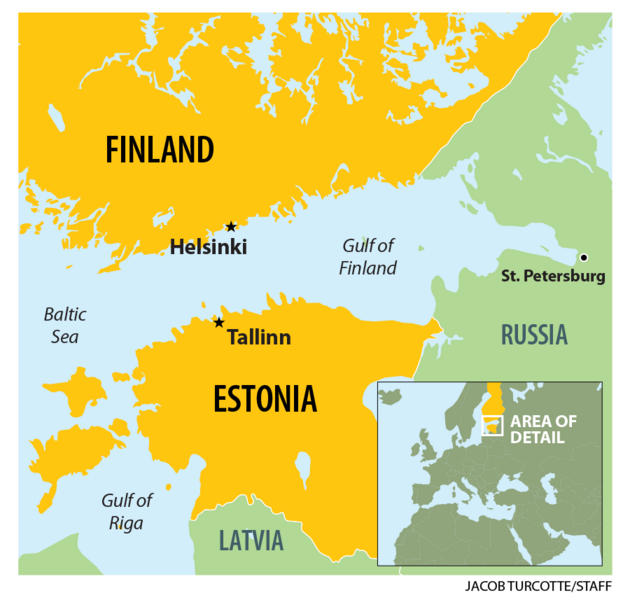Is EU in decline? Ever-closer Finland and Estonia beg to differ.
Loading...
| Tallinn, Estonia; and Helsinki, Finland
With Britain’s shock vote in June to depart the European Union, and the principle of cross-border cooperation and free movement of people under fire elsewhere on the continent, some have warned that the EU is dying.
But that’s not the way it looks when one zooms in on EU’s northeastern corner in the eastern Baltic, in particular on the frenetic scene that takes place every day at Helsinki’s gargantuan western ferry terminal.
Several times a day, the vast structure is flooded with thousands of Finns lining up to board the fleet of “slow boats” or cruise ships, and “fast” hydrofoils bound for Tallinn, 50 miles away, across the Gulf of Finland. At the same time, an increasing number of Estonians – some of the more than 100,000, nearly 10 percent of Estonia’s population, who work in Finland – disembark in Helsinki, after having made the hour-and-forty-minutes to three-hour nautical commute through the equally busy port of Estonia's capital.
All told, eight million passengers – more than the combined population of Finland and Estonia – cross the busy seaway by ferry every year. And that's just one of the most overt ways that the Finnish and Estonian economies and governments have been cooperating, both physically and digitally. As Arno Linethan, the former first secretary at the Estonian embassy in Helsinki put it, “a rainbow has formed between our two countries, and every year that rainbow grows wider and takes on new bands.”
The evolution of the Finnish-Estonian relationship is "quite exciting," says Kirsti Narinen, the Finnish ambassador to Tallinn who has witnessed it since her first posting to the Estonian capital in 1993. "We don’t make a lot of noise about it, but the two countries are virtually integrated."
“It’s almost as if what is happening with Britain and Brexit is happening in another world,” says Ms. Narinen, who considers EU’s northeastern corner EU’s “strongest redoubt,” with the expanding Finnish-Estonian “rainbow” one of its showpieces.
'Two branches of the same tree'
To be sure, Finland and Estonia have a lot more in common than many EU neighbors. Both Finnish and Estonian are members of the Fenno-Ugric language group. Most Finns can at least somewhat understand Estonian, even if they don’t speak it, and vice versa. The two countries also have a shared political history. Both were Imperial Russian provinces before becoming republics after World War I. The two countries bonded during the “golden time” between the wars. That process stopped in World War II when the USSR re-subjugated Estonia, while its Finnish relative retained its independence. Then in 1991, the Iron Curtain fell and the two countries began building on their common ties again, a process which accelerated when Estonia became a member of the EU in 2004, alongside Finland, which joined a decade earlier.
Hannele Valkeenimiei, the press and cultural counselor at the Finnish Embassy in Tallinn, waxes lyrical about this “tale of two countries,” as the Finnish-Estonian rapprochement has been called. “I see the two countries as two branches of the same tree which lies at the bottom of the Baltic, with the Finnish branch ‘growing up’ on the northern coast, and the Estonian branch shooting up on the southern.”
Sentimentally, Finland and Estonia were perhaps closest during the 1990s when the Finnish government enthusiastically trained the Estonian military, police and border guards, while Finnish businesses were busy opening up shop across the gulf. “Back in the '90s, Estonians really kept Finns at their hearts and admired them,” says Aku Sorainen, a Finnish lawyer who moved to Tallinn in 1995.
“Finns and Estonians commute to work, study, shop, use public and commercial services, and visit each others' countries as if they were traveling around the same country rather than traveling abroad,” declares Gunnar Okk, the former CEO of national utility Estonian Energy, now vice president of Nordic Investment Bank. “For anyone who remembers what things were like twenty five years ago, when two countries were separated by the Iron Curtain, it’s pretty astounding.”
“Twenty years ago I think Finns thought of Estonians as hapless brothers,” says Scott Diehl, an American writer and editor based who lives in Tallinn and has also seen the relationship evolve. “Now I see a relationship based on mutual respect.”
“I think that the fact that so many Estonians came to Finland to work was a game changer,” says Ms. Narinen. “Estonians learned that Finnish society is pretty good to its people. And Finns found that Estonians are hard working, precise, and reliable people, much like the Finns themselves."
“Of course there are differences between us,” including Estonia's decision to join NATO while Finland continues to shy away from the alliance, the ambassador notes. “Nevertheless what does not take away from the other, very real and increasing ties that bind us, including our common membership in EU, of which we are both proud.”
The EU as catalyst
The EU has further cemented the relationship between the two countries by helping to fund a wide range of joint infrastructure projects, which have united the two countries in other ways. Just last month the European Commission allocated over $200 million, or two thirds the cost of BalticConnector, an undersea Finland-Estonia gas pipeline. Another bilateral project which has received EU funding is the long-range environmental project to clean up the nuclear waste the Soviets left behind at the former submarine base at Paldiski, Estonia.
Officials on both sides of the gulf are particularly excited about the newest, digital band of the “rainbow”: the expansion of Estonia's so-called X-Road, an online data integration standard, to connect the two governments’ databases. Though not an EU-financed project, it does go toward the bloc's cooperation goals.
“So far digital government has stopped at physical borders,” says Siim Sikkut, the Estonian prime minister’s top digital adviser. “Everywhere if you go to do business or live or work in another country, there is lots of paperwork. We are trying to eliminate that, and by doing so creating a model for the rest of EU." He also notes proudly that “The Estonia-Finland X-Road collaboration is unique in that it is the first cross-border initiative for 'whole-of-government' data exchange that would be permanent."
Another project on the drawing board that would further fuse the two countries is a proposed railway tunnel linking the "twin capitals," running beneath the Gulf of Finland. Though once a pipe dream, the tunnel is now a subject of intense study and discussion. “It would be really great to have the tunnel one day,” says Mr. Sorainen. Some however, like Okk, demur at the project’s estimated $10 billion to $15 billion cost. “It makes no economic sense to execute such a project,” he says, pointing out that there are already nearly twenty ship crossings across the gulf every day.
Ultimately the decision on the tunnel will be made by both governments pending the results of a feasibility study which the two recently agreed to undertake – and which the EU is underwriting. Little wonder why Ambassador Narinen calls this neck of Europe EU’s “strongest redoubt.”







